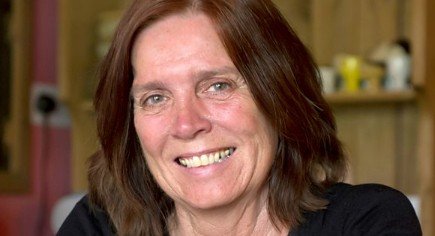Sheila Ravenscroft: A Life in Partnership, Music and Legacy

Sheila Ravenscroft is best known as the wife and life partner of the legendary British DJ John Peel, but her own story is one of quiet resolve, shared passions and a legacy that intertwines with the evolution of British broadcasting and music. Over the decades, she quietly supported her husband’s ventures, completed his work after his passing, and became a custodian of aspects of his archive. This article explores her life—from her early years, through her marriage, to her role in continuing John Peel’s story.
Early Life and Background
Little is widely known in the public domain about Sheila’s formative years, but what is understood comes from interviews, public appearances and her later writings. Born with the name Sheila Gilhooly, she emerged into the world at a time when women’s roles were often shaped in relation to their husbands. Throughout her life, however, she played a far more active part in cultural history than most spouses of public figures.
Growing up, Sheila displayed an appreciation for music and literature. While details are sparse about her education or early career, what emerges from accounts is a person of curiosity and broad cultural interests—qualities that would prove complementary to John Peel’s own restless creativity. She and Peel met in the years prior to their marriage, and from early on their relationship was built on shared passions: collecting rare music, exploring lesser-heard artists, and celebrating the fringe as much as the mainstream.
Meeting John Peel
In the early 1970s, Sheila Gilhooly entered into the orbit of John Peel (born John Robert Parker Ravenscroft). Peel, already making a name for himself in the British radio landscape, was known for his eclectic musical taste and championing of new, underground artists. Their meeting is often described as one rooted in a shared love of music; Sheila was drawn to Peel’s enthusiasm for discovering undiscovered records and rare 78s (shellac records).
Throughout their courtship, the two developed a mutual admiration—not just as companions but as collaborators of sorts. Sheila was more than a wife: she was a sounding board, a confidante in music-collecting, and often accompanied Peel on digging trips for obscure records. Their synergy enabled Peel’s broadcasting persona to flourish, grounded by the stability and empathy Sheila provided.
Marriage, Family and Home
In 1974, the couple were married, and Sheila formally became Sheila Ravenscroft. Together, they set up life in the Suffolk countryside, at the house known as Peel Acres. It became a domestic and creative hub: a place not only for family but for music, archives, collections and ideas. The house and property would house Peel’s legendary library of recordings and vinyls, and Sheila would become guardian of much of that material over time.
Sheila and John had four children: William Ravenscroft, Alexandra Ravenscroft, Thomas Ravenscroft (also known as Tom Ravenscroft, who followed in his father’s footsteps into radio), and Florence Ravenscroft.
Life in Peel Acres was never quiet. The house was often full of tapes, turntables, unusual artefacts, and visits from musicians, friends, critics and fans. Sheila maintained a balance—managing the household, caring for their children, and quietly preserving John’s itinerant creative energy.
Despite being married to one of Britain’s most famous DJs, Sheila mostly remained out of the spotlight. She did, however, host and support Peel’s occasional forays into print, compilations and events. Her influence on the domestic side—ensuring he could continue working in comfort and peace—was essential.
Shared Passions: Music, Records and Rare Finds
One of the most interesting domains of Sheila’s involvement is in the world of collecting 78 rpm records. John Peel was known for his obsession with early shellac discs, and Sheila shared that interest.
The couple would often travel, seek out collectors and dealers, and assemble rare finds. This shared passion fed into Peel’s radio persona (where he periodically played obscure 78s) and influenced various projects later attributed to “Peel & Sheila.” It was more than a hobby—it was a continuous effort to preserve musical history that might otherwise be lost.
That joint endeavour surfaced in a compilation they helped assemble: John Peel & Sheila: The Pig’s Big 78s — A Beginner’s Guide. After Peel’s death in 2004, Sheila took a more active role in bringing these shared projects to fruition, solidifying the notion that their musical partnership was genuine and enduring.
John Peel’s Death and Aftermath
John Peel died suddenly in October 2004, leaving a vacuum in British radio and a grieving family. For Sheila, the task ahead was immense: managing the emotional and administrative aftermath, preserving Peel’s legacy, and caring for their children.
Almost immediately, she became involved in finishing Peel’s autobiography, Margrave of the Marshes. The book had been in progress before his death, and Sheila took on the bulk of the work finishing, editing, and structuring it for publication. The end result was widely praised for retaining Peel’s voice while offering insights into their family life and his professional obsessions.
Beyond that, Sheila became a guardian of Peel’s vast archive: his recordings, tapes, notes and library. She oversaw the cataloguing, preservation and curation of this material, working with colleagues, media organisations and music historians to ensure that the material was not lost, neglected or misrepresented.
She also became a presence at events and memorials. While usually a private person, Sheila accepted invitations to speak, appear or comment—always carefully—on matters relating to Peel’s life and heritage.
Sheila’s Role as Mediator of Legacy
Over the years, Sheila Ravenscroft took on a more visible role as gatekeeper of Peel’s legacy. There were several dimensions to that.
Archival Integrity
Sheila ensured that Peel’s personal archives were maintained and preserved. This included original tapes, correspondence, playlists, and rare records. She understood that such materials were not merely mementos but cultural artefacts. Ensuring their survival meant engaging with institutions, trusts, and publishers.
Authentically Telling the Story
Sheila was protective of how Peel’s story was told. She engaged with documentaries, biographies, and media outlets, often helping to correct inaccuracies or provide insider context. Her aim was not to dominate the narrative but to make sure it was fair, credible and sensitive to the family’s memory.
Supporting New Generations
Sheila supported efforts to keep Peel’s influence alive—especially via their son Tom Ravenscroft, who works in radio and music broadcasting. She allowed access to archival materials in scholarly or media projects, and sometimes personally contributed memories or resources to exhibitions or retrospectives.
Managing Rights and Estates
Posthumous estate management is complex. Sheila managed publication rights, licensing, permissions for use of Peel’s name or recordings, and collaborations with museums, radio stations and media outlets. She balanced commercial interests with the imperative to maintain dignity and respect for Peel’s cultural contributions.
Public Perception and Media Mentions
Given her personal style and inclination towards privacy, Sheila’s public profile has always been relatively low. She seldom granted high-profile interviews. Instead, her presence was felt through her actions—finishing Peel’s work, supervising archival releases, and occasionally speaking at commemorative events.
Still, she has been photographed at key events such as funerals, memorials and gallery openings and cited in music journalism when reference to Peel’s personal life is necessary. She is sometimes described as the quiet anchor behind a whirlwind—keeping the family and archive grounded, while Peel journeyed through cultural frontiers.
Media accounts often emphasise her importance not merely as a spouse but as a collaborator. In many features about Peel’s life, writers now see the narrative as incomplete without referencing Sheila’s support, influence and stewardship.
Challenges, Criticism and Balancing Act
Being the surviving spouse of a major cultural figure is not an easy role, and Sheila faced several challenges.
Maintaining privacy versus public demand required careful judgment. The public and media wanted more stories, access to personal materials, and inside accounts. Sheila had to draw lines—deciding which materials to release, which stories to suppress and which interpretations to allow.
Commercial pressure also played a part. There were offers to monetise Peel’s name, archive and brand. Sheila had to decide where to allow commercial exploitation and where to refuse in order to preserve artistic integrity.
Balancing family interests was equally important. She had to consider what was best for the public legacy while honouring the privacy and wishes of the children. Each child may have differing views on access, narrative control and projects.
Managing a large collection of tapes, vinyl and documents over decades involves physical preservation, digitisation, cataloguing and rights negotiation. All of this requires expertise, money and time.
Through all this, Sheila has generally been judged to have acted responsibly and with sensitivity—recognising both her duty to the legacy and her duty to the family.
Impact, Influence and Cultural Resonance
Although Sheila’s name is less celebrated than her husband’s, her role in sustaining Peel’s influence is substantial.
Because the archives remain sound and accessible, fans, radio historians, musicologists and journalists can continue to explore Peel’s output with authenticity. The existence and integrity of the archive owes a great deal to Sheila’s stewardship.
She is a role model for behind-the-scenes influence. Many people who work in artistic, academic or media fields know that success often depends on invisible labour. Sheila’s example shows how a supportive partner can also be a rightful custodian of cultural work.
By helping to complete his autobiography, curate compilations and allow selective access, she has extended Peel’s mission of elevating overlooked music. Her ongoing work ensures that Peel’s voice still resonates to newer audiences.
Through her son Tom and through archives now used by broadcasters, new generations are exposed to Peel’s tastes and legacy. Sheila played a role in making that bridge possible, rather than letting Peel’s work fade into obscurity.
Recent Activities and Legacy Projects
In recent years, Sheila has remained modest in public involvement, but several efforts bear her guidance.
Projects releasing Peel’s radio sessions, vinyl sets and retrospectives often require permissions and insights from her. She sometimes contributes oral memory or notes to contextualise the releases.
She has occasionally accepted interviews or appearances—for instance at memorial concerts, radio tributes or gallery events showcasing Peel’s memorabilia. In those instances she offers rare but meaningful insights into their life together.
On significant anniversaries of Peel’s death or milestone dates in his career, she has occasionally authorised or supported public events or exhibitions, lending the family’s voice to the occasion.
Filmmakers, authors and media producers studying Peel’s life have sometimes consulted Sheila, whether for fact-checking or permission. Her recorded reminiscences and internal knowledge are valuable in ensuring accuracy and integrity.
Conclusion
Sheila Ravenscroft is more than the widow of John Peel. She is a living conduit between past and present, quietly shaping how one of Britain’s most influential broadcasters is remembered. Her efforts in finishing Peel’s works, preserving archives, curating legacy projects and balancing public interest with personal privacy mark her as a figure of cultural responsibility.
Though her name remains lesser known in many public circles, any serious account of Peel’s life—and indeed of that vibrant era of British radio and alternative music—requires recognition of Sheila’s crucial role. Her life is testament to what it means to be both companion and custodian, a bridge between a life lived in sound and a memory preserved in trust.



